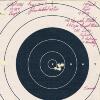Scout21
Member
I'd like to pick up some Speer Hot-Cor bullets for my .308 Win. Am I able to crimp the bullet without there being a cannelure?
I'll be using a friend's Dillon XL750. He has a Lee Factory Crimp die for .308, will I be able to use that with no issues?
Will I be able to load and crimp the rounds in the same go, or will I need to replace the dies in the die holder with the crimp die to crimp it separately?
I'll be using a friend's Dillon XL750. He has a Lee Factory Crimp die for .308, will I be able to use that with no issues?
Will I be able to load and crimp the rounds in the same go, or will I need to replace the dies in the die holder with the crimp die to crimp it separately?










